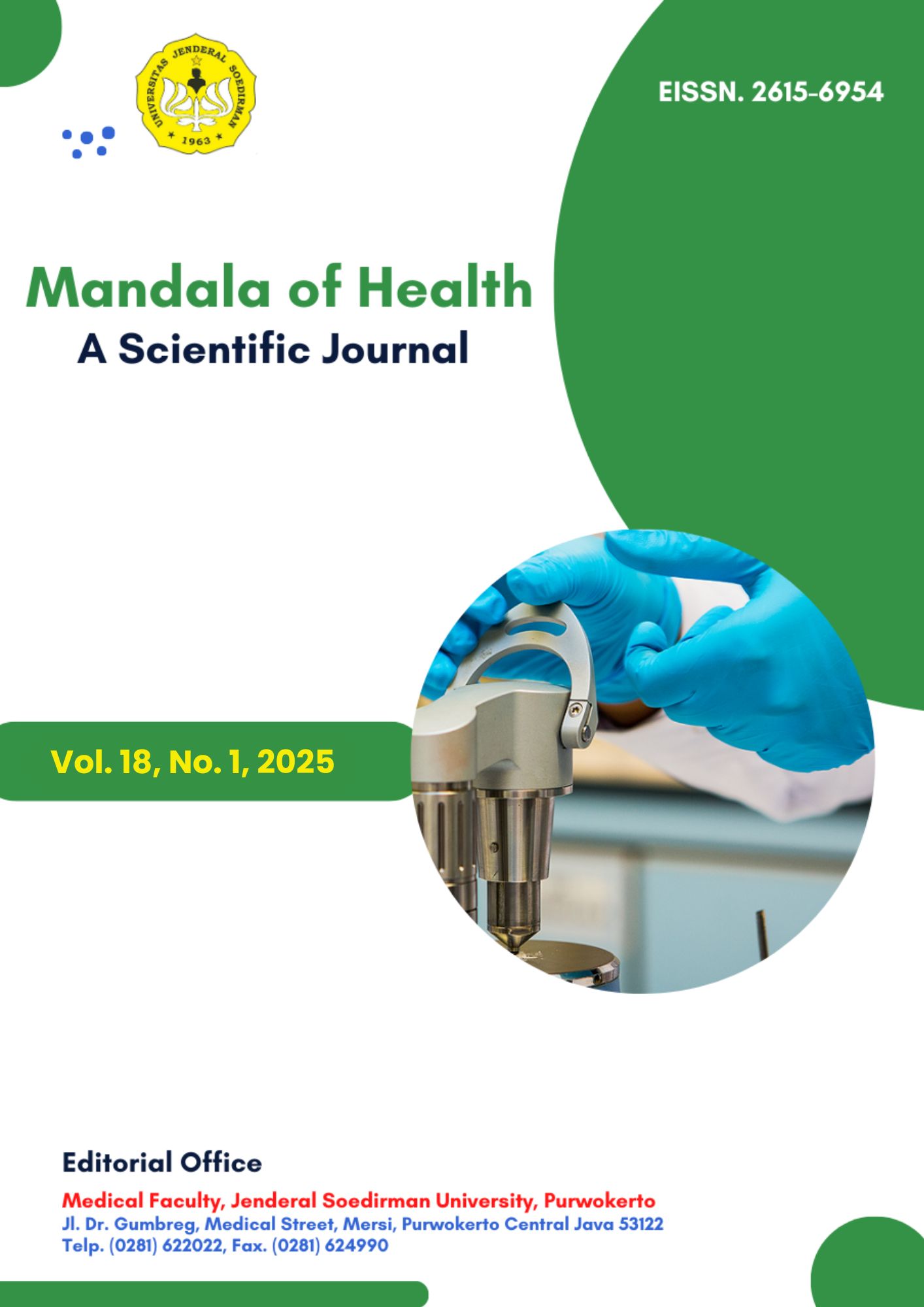THE IMMUNE RESPONSE TO HUMAN IMMUNODEFICIENCY VIRUS
Abstract
Human Immunodeficiency Virus (HIV) is an infectious agent that disrupts the immune system by destroying CD4+ T lymphocytes, thereby triggering a decline in immune function and the development of Acquired Immunodeficiency Syndrome (AIDS). HIV employs a complex infection mechanism, including binding to host cell receptors, integration of genetic material, and modulation of the immune system to evade detection. The immune response to HIV involves the innate immune system, such as the activation of macrophages and dendritic cells through pattern recognition receptors, as well as the adaptive immune system through the activity of cytotoxic T cells and antibody production by B cells. However, HIV utilizes various strategies to evade immune responses, including rapid mutation and down-regulation of immune molecule expression. Antiretroviral therapy (ART) is the primary strategy for inhibiting HIV replication and maintaining immune system function, and it has been proven effective in reducing the morbidity and mortality associated with HIV infection, although a curative therapy has yet to be discovered.
References
Altfeld, M. & Gale, M. Jr 2015, ‘Innate immunity against HIV-1 infection’, Nature Immunology, vol. 16, no. 6, pp. 554–562, viewed 12 March 2025, https://doi.org/10.1038/ni.3157.
Günthard, H.F., Saag, M.S., Benson, C.A., del Rio, C., Eron, J.J., Gallant, J.E., Hoy, J.F., Mugavero, M.J., Sax, P.E., Thompson, M.A., Gandhi, R.T., Landovitz, R.J., Smith, D.M., Jacobsen, D.M. & Volberding, P.A. 2016, ‘Antiretroviral drugs for treatment and prevention of HIV infection in adults: 2016 recommendations of the International Antiviral Society-USA Panel’, JAMA, vol. 316, no. 2, pp. 191–210, viewed 12 March 2025, https://doi.org/10.1001/jama.2016.8900.
Hazra, A. & Stoszek, S.K. 2011, ‘HIV infection in children’, Pediatrics in Review, vol. 32, no. 10, pp. 429-441, viewed 12 March 2025, https://doi.org/10.1542/pir.32-10-429.
Pagaya, J. & Que, B.J. 2017, ‘Respons imun seluler dan humoral terhadap infeksi HIV’, Molucca Medica, pp. 41-49.
Pardi, N., Hogan, M. J., Porter, F. W., & Weissman, D. (2018). mRNA vaccines - a new era in vaccinology. Nature reviews. Drug discovery, 17(4), 261–279. https://doi.org/10.1038/nrd.2017.243
Shaw, G.M. & Hunter, E. 2012, ‘HIV transmission’, Cold Spring Harbor Perspectives in Medicine, vol. 2, no. 11, viewed 12 March 2025, https://doi.org/10.1101/cshperspect.a006965.
Sok, D., & Burton, D. R. (2018). Recent progress in broadly neutralizing antibodies to HIV. Nature immunology, 19(11), 1179–1188. https://doi.org/10.1038/s41590-018-0235-7
Sudigdoadi, S., Mikrobiologi, B. & Kedokteran, F. n.d., Imunopatogenesis Infeksi HIV.
Yin, X., Langer, S., Zhang, Z., Herbert, K.M., Yoh, S., König, R. & Chanda, S.K. 2020, ‘Sensor sensibility-HIV-1 and the innate immune response’, Cells, vol. 9, no. 1, pp. 254, viewed 12 March 2025, https://doi.org/10.3390/cells9010254.
Zhen, A., Kamata, M., Rezek, V., Rick, J., Levin, B., Kasparian, S., Chen, I. S., Yang, O. O., Zack, J. A., & Kitchen, S. G. (2015). HIV-specific Immunity Derived From Chimeric Antigen Receptor-engineered Stem Cells. Molecular therapy : the journal of the American Society of Gene Therapy, 23(8), 1358–1367. https://doi.org/10.1038/mt.2015.102

This work is licensed under a Creative Commons Attribution-NonCommercial-ShareAlike 4.0 International License.







